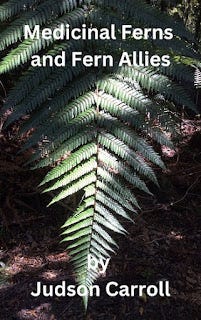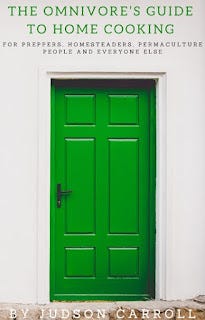Medicinal Trees: Bladder Nut (Staphylea trifolia) and Snowbell (Sytrax)
Staphylea trifolia, Bladder Nut
Five varieties of Staphylea have been found useful in Herbal Medicine: Staphylea bumalda, Staphylea colchica - Bladdernut, Staphylea emodi, Staphylea pinnata - Bladder Nut, Staphylea trifolia - American Bladder Nut
Only one Staphylea is native to my region, Staphylea trifolia (American Bladdernut). Like many uniquely American trees that are unique to a region, I cannot find much information on its medicinal use. Plants for A Future states only, “An infusion of the powdered bark has been used as a wash for sore faces.” Although, the seed is edible and said to be quite good.”
Resources of the Southern Fields and Forests tells us:
STAPHYLEACEJD. {Bladder-nut Family.)
THEEE LEAVED BLADDER-NUT, (Staphylea trifolia, L.)
Damp woods. North Carolina, Tennessee and northward (Chap.) The nut of our tree resembles closely that of the S. pinnata, which is used in Catholic countries for making rosaries. Rosaries are also made of the seeds of the Pride of India tree, {Melia.) The nuts of the S. trifoliata resemble a large, inflated bladder. Cyrilla racemlflora, Walter. Grows in swamps and inundated lands; collected in St. John's, where it is found in abundance; vicinity of Charleston ; Newbern. Fl. July. Ell. Bot. Med. Notes, i, 295. The outer bark of the oldest shrubs, near the root, is extremely light and friable, and absorbs moisture. It has been used with advantage as a substitute for agaric and other styptics. I learn that it is much confided in for this purpose by those living in Darlington District, South Carolina. When rubbed on the hand, it produces a sensation similar to that produced by the application of an astringent fluid. It has also been applied to ulcers when the indication is to cicatrize them. This plant merits further attention. TITI, {Cliftonia ligxistrina, Banks. Mylocarium, Wild.) Pine barren ponds and swamps, Florida and lower districts of South Carolina and Georgia. The stems, when dried, are found to suit admirably for pipe- stems—a heated wire being passed through the pith. Much used by our soldiers in camps ; and now (1868) becoming to some extent an article of trade.
Styrax, Snowbell
Three varieties of Styrax have been found useful in Herbal Medicine: Styrax japonica - Japanese Storax, Styrax officinalis - Storax Tree, Styrax serrulatus
Two varieties of Styrax are native to my region, but they are not listed above: Styrax americanus (American Snowbell), Styrax grandifolius (Bigleaf Snowbell). They likely share similar properties, but will need further study. Plants for A Future lists Styrax as simply, “A resin obtained from the stems of the plant is antiseptic and expectorant.”
Dioscorides wrote of Styrax:
Styrax is the oozing of a certain tree like a quince tree. The best is yellow, fat, full of resin, having white under the clots, which remains a long time in its sweet sauce, and which when it is softened releases a certain honeyish kind of moisture. The gabalites, pissiadicus and the cilicius are like this. That which is black, brittle and like bran (or encrusted) is worthless. An oozing like the gum is also found (transparent like myrrh but there is only a little that grows of this. They counterfeit it with powder from the same tree (made by the boring of worms) by mixing honey with it and the thick matter of iris and certain other things. Some also aromatise wax or tallow in the sharpest sun, work it together with styrax, and press it out into cold water through a colander with broad holes (making as it were little worms of it), and they sell it, calling it vermiculatum [now a name for gum of acacia thorns]. Those who are unskilful approve of it as authentic, not noticing the weak intensity of the smell, for that which is without deceit is very sharp. It is warming, softening and digestive. It cures coughs and dripping mucus, runny noses, hoarseness and loss of the voice. It is good for closures and hardness in the vulva, and taken as a drink and applied it dries out the menstrual flow. It gently softens the bowels if a little of it is swallowed down with resin terminthos. It is also effective mixed with dispersing ointments or plasters and acopon [fatigue removers]. It is burned, roasted, scorched and made into a soot like thus and this soot is good for the same things as thus. But the ointment styracinum [also refered to as oil of crocus] which is made from it in Syria warms and powerfully softens; but it causes pain, heaviness of the head and sleep.
Gerard Listed Storax as:
A. It helpeth the cough, the falling down of rheums and humours into the chest, and hoarseness of the voice: it also helpeth the noise and sounding of the ears, prevaileth against strumas, or the King's evil, nodes on the nerves, and hard swellings proceeding of a cold cause: it prevaileth also against all cold poisons, as Hemlocks and such like.
B. Of this gum there are made sundry excellent perfumes, pomanders, sweet waters, sweet bags, and sweet washing balls, and divers other sweet chains & bracelets, whereof to write were impertinent to this history.
Culpepper wrote of the Storax Tree:
This is a Solar plant, and only the gum is used. It is hot in the second degree, and dry in the first. It heals, molifies, and digests, and is good for coughs, catarrhs, distillations of rheum and hoarseness. Pills thereof, with a little turpentine, gently loosen the belly. It resists cold poisons. Dropped into the ears, it helps the singing and noise in them. Applied to parts afflicted with cold aches, it gives much comfort and ease, and is good to be put in baths for lameness and weakness. It is also good to put with white frankincence to perfume those that have catarrhs, rheums, and defluxions from the head to the nose, or other parts, by casting it on quick coals, and holding the head over the smoke. It dissolves hard tumours in any part, and is good for the king's evil.
Mrs. Grieves wrote of Storax as:
A stimulating expectorant and feeble antiseptic, at present very seldom used except as a constituent of the compound tincture of benzoin. Externally, mixed with 2 or 3 parts of olive oil, it has been found a useful local remedy in scabies. It has the same action as balsams of Tolu and Peru and benzoin. It has been recommended as a remedy in diphtheria, in pulmonic catarrhs, and as a substitute for South American copaiba in gonorrhoea and leucorrhoea. Combined with tallow or lard, it is valuable for many forms of skin disease, such as ringworm, especially in children. The taste and smell of opium is well concealed by the addition of Storax in pills, its fragrance being used frequently also in ointments.
King's American Dispensatory, 1898 tells us:
Action, Medical Uses, and Dosage.—Storax is a stimulant, acting more especially upon mucous tissues, as do nearly all balsams. It has been found beneficial as an expectorant in cough, chronic catarrh, asthma, bronchitis, and other pulmonary affections; also in gonorrhoea, leucorrhoea, and gleet, in which it is as efficient, and more pleasant than copaiba. In fact the uses of storax are very similar to those of the latter balsam. Combined with tallow or lard, it forms a valuable application in many forms of cutaneous disease, especially those common to children, as ringworm, tinea, ringworm of the scalp, scabies, etc. It forms a good application for ulcerations, the result of freezing the fingers or toes. It is much used, on account of its fragrance, for compounding ointments and pills, and is an excellent addition to opium in the form of pill, when it is necessary to conceal the taste and smell of this narcotic; 3 or 4 grains of storax may be combined with 1 grain of opium for this purpose. The dose of storax is from 10 to 20 grains, gradually increased.
This article is an excerpt from The Medicinal Trees of the American South, An Herbalist's Guide: by Judson Carroll
His New book is:
Read About:
Medicinal Ferns and Fern Allies, an Herbalist's Guide
Available for purchase on Amazon:
https://www.amazon.com/dp/B0BMSZSJPS
His new cookbook is:
Read About The Omnivore’s Guide to Home Cooking for Preppers, Homesteaders, Permaculture People and Everyone Else"
https://southernappalachianherbs.blogspot.com/2022/10/the-omnivores-guide-to-home-cooking-for.html
Available for purchase on Amazon:
https://www.amazon.com/dp/B0BGKX37Q2
His other works include:
Medicinal Shrubs and Woody Vines of The American Southeast An Herbalist's Guide
Read about Medicinal Shrubs and Woody Vines of The American Southeast An Herbalist's Guide: https://southernappalachianherbs.blogspot.com/2022/06/medicinal-shrubs-and-woody-vines-of.html
Available for purchase on Amazon: https://www.amazon.com/dp/B0B2T4Y5L6
Growing Your Survival Herb Garden for Preppers, Homesteaders and Everyone Else
Read About Growing Your Survival Herb Garden for Preppers, Homesteaders and Everyone Else: http://southernappalachianherbs.blogspot.com/2022/04/growing-your-survival-herb-garden-for.html
Available for purchase on Amazon: https://www.amazon.com/dp/B09X4LYV9R
The Encyclopedia of Bitter Medicinal Herbs:
southernappalachianherbs.blogspot.com/2022/03/the-encyclopedia-of-bitter-medicina.html
Available for purchase on Amazon:
https://www.amazon.com/dp/B0B5MYJ35R
Christian Medicine, History and Practice:
https://southernappalachianherbs.blogspot.com/2022/01/christian-herbal-medicine-history-and.html
Available for purchase on Amazon: www.amazon.com/dp/B09P7RNCTB
Herbal Medicine for Preppers, Homesteaders and Permaculture People
southernappalachianherbs.blogspot.com/2021/10/herbal-medicine-for-preppers.html
Also available on Amazon: https://www.amazon.com/dp/B09HMWXL25
Look Up: The Medicinal Trees of the American South, An Herbalist's Guide
http:///www.amazon.com/dp/1005082936
The Herbs and Weeds of Fr. Johannes Künzle:
https://southernappalachianherbs.blogspot.com/2021/05/announcing-new-book-herbs-and-weeds-of.html
Author: Judson Carroll. Judson Carroll is an Herbalist from the Blue Ridge Mountains of North Carolina.
His weekly articles may be read at judsoncarroll.com
His weekly podcast may be heard at: www.spreaker.com/show/southern-appalachian-herbs
He offers free, weekly herb classes: https://rumble.com/c/c-618325
Disclaimer
The information on this site is not intended to diagnose or treat any disease or condition. Nothing on this site has been evaluated or approved by the FDA. I am not a doctor. The US government does not recognize the practice of herbal medicine and their is no governing body regulating herbalists. Therefore, I'm just a guy who studies herbs. I am not offering any advice. I won't even claim that anything I write is accurate or true! I can tell you what herbs have "traditionally been used for." I can tell you my own experience and if I believe an herb helped me. I cannot, nor would I tell you to do the same. If you use any herb I, or anyone else, mentions you are treating yourself. You take full responsibility for your health. Humans are individuals and no two are identical. What works for me may not work for you. You may have an allergy, sensitivity or underlying condition that no one else shares and you don't even know about. Be careful with your health. By continuing to read my blog you agree to be responsible for yourself, do your own research, make your own choices and not to blame me for anything, ever.






